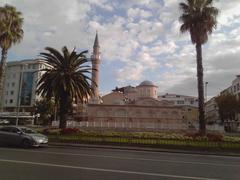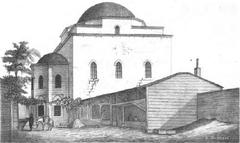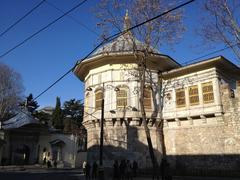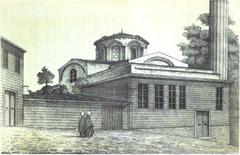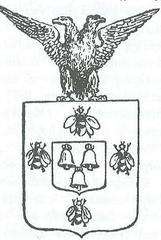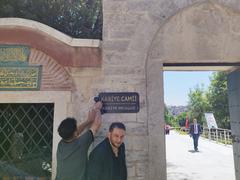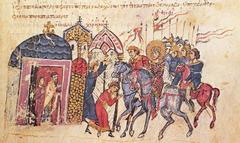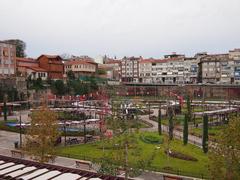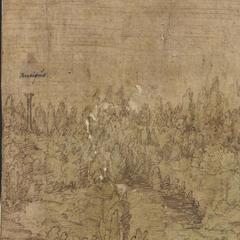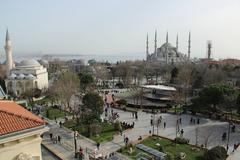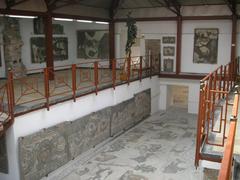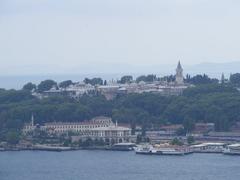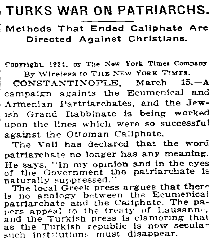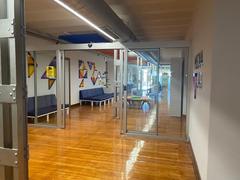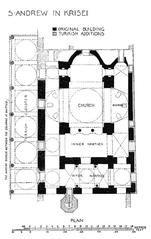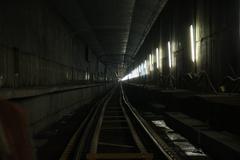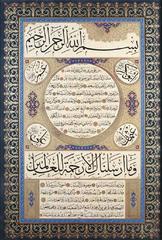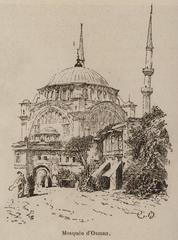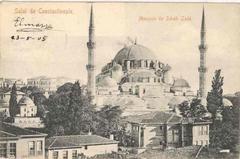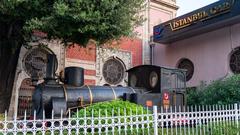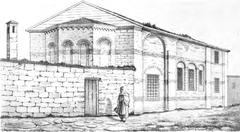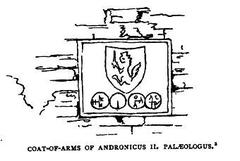
Fenari Isa Mosque: Visiting Hours, Tickets, and Historical Significance in Fatih, Turkey
Date: 14/06/2025
Introduction
Fenari Isa Mosque, located in Istanbul’s storied Fatih district, stands as a profound testament to the city’s multicultural evolution, seamlessly blending Byzantine Christian origins with Ottoman Islamic heritage. Originally established as the Monastery of Constantine Lips in 908 CE, this site embodies centuries of architectural innovation and spiritual significance. Today, it welcomes visitors eager to experience Istanbul’s layered past, explore striking Byzantine and Ottoman features, and connect with a living place of worship. This comprehensive guide details Fenari Isa Mosque’s history, architecture, visiting hours, accessibility, nearby attractions, and practical travel tips, ensuring a memorable visit for history enthusiasts and casual travelers alike. For in-depth context and visitor resources, see The Byzantine Legacy, MCID Columbia, and Spotting History.
Table of Contents
- Introduction
- Historical Evolution of Fenari Isa Mosque
- Architectural Highlights
- Visiting Fenari Isa Mosque: Practical Information
- Nearby Attractions in Fatih
- Conservation and Restoration Efforts
- Frequently Asked Questions (FAQ)
- Summary and Visitor Recommendations
- References
Historical Evolution of Fenari Isa Mosque
Byzantine Foundations
The Fenari Isa Mosque began as the Monastery of Constantine Lips, founded by Admiral Constantine Lips during the reign of Emperor Leo VI the Wise. The original complex, constructed between 886 and 912 CE, is the earliest securely dated Middle Byzantine church in Constantinople and was dedicated to the Virgin Theotokos Panachrantos. Its cross-in-square plan represented a significant architectural innovation, influencing later Byzantine construction (The Byzantine Legacy; MCID Columbia).
In the late 13th century, Empress Theodora expanded the site with a second church dedicated to St. John the Baptist, which functioned as a funerary chapel and housed the remains of several members of the Palaiologos dynasty. The complex was further enlarged in the 14th century with an L-shaped ambulatory to accommodate additional burials and monastic activities.
Ottoman Conversion and Restoration
After the Ottoman conquest in 1453, the south church was converted into a mosque in 1497–1498 by Fenarizade Alâeddin Ali ben Yusuf Efendi, in honor of his uncle, the esteemed scholar Molla Şemseddin Fenari. Islamic features—including a mihrab and minaret—were introduced, and Christian imagery was removed or covered. The north church was later adapted as a tekke (dervish lodge), reflecting the Ottoman integration of Sufi traditions (Wikipedia; MCID Columbia).
The mosque suffered damage from several fires (notably in 1633, 1782, 1847, and 1917), leading to successive restoration campaigns. The most significant 20th-century restoration was conducted by the American Byzantine Institute in the 1960s, which stabilized the structure and preserved its key historic features (The Byzantine Legacy).
Architectural Highlights
Byzantine Innovations
- North Church (Theotokos tou Libos): Features the earliest cross-in-square plan in Constantinople, with a central dome, tripartite bema, and three-bay narthex (The Byzantine Legacy).
- South Church (St. John Prodromos): Built as a funerary chapel, it includes an ambulatory and additional chapels, reflecting late Byzantine burial practices.
- Materials: Extensive use of brick and stone, with spolia from earlier structures and a rich array of Middle Byzantine sculptural decoration, including capitals, cornices, and ornamental motifs like foliage, palmettes, crosses, peacocks, and eagles (MCID Columbia).
Ottoman Modifications
- Minaret: Added at the southeast corner.
- Mihrab and Minbar: Installed to designate the direction of Mecca and for sermons.
- Structural Changes: Following the 1633 fire, columns were replaced with piers and pointed arches, domes were rebuilt, and the north church became a dervish lodge (Wikipedia).
Burial Architecture and Artistic Elements
- Tombs and Sarcophagi: The site contains at least 29 tombs and four ossuaries, with burial niches (arcosolia) along the ambulatory (The Byzantine Legacy).
- Decorative Elements: Byzantine brickwork, vertical windows, chapels, and surviving original capitals and cornices are notable for visitors (Gezibilen).
Visiting Fenari Isa Mosque: Practical Information
Location and Accessibility
The mosque is located in Istanbul’s Fatih district, close to major landmarks like the Chora Church and Fatih Mosque. The nearest tram stop is Aksaray; bus and taxi options are widely available (Spotting History). Some areas have uneven surfaces or steps, potentially challenging for visitors with limited mobility.
Visiting Hours and Admission
- Hours: Open daily from 9:00 AM to 5:00 PM, except during prayer times and religious holidays.
- Admission: Free of charge; donations for maintenance are welcome.
Dress Code and Visitor Etiquette
- Modest attire is required: men should wear long trousers; women must cover their heads, shoulders, and legs. Scarves are often available at the entrance.
- Shoes must be removed before entering the prayer hall.
- Silence and respectful behavior are expected, as the mosque remains an active worship site.
- Photography is permitted, but avoid using flash and photographing worshippers during prayers.
Guided Tours and Special Events
Guided tours can be arranged through local operators or by inquiring at the mosque. These tours enhance understanding of the site’s unique architectural and historical context. During Ramadan and other Islamic holidays, the mosque may host special prayers or community events.
Photography Tips
Late morning and early afternoon provide the best natural lighting for photographs. Focus on capturing the contrasts between Byzantine masonry and Ottoman modifications.
Nearby Attractions in Fatih
- Chora Church (Kariye Mosque): Celebrated for its mosaics and frescoes.
- Fatih Mosque: A grand Ottoman imperial mosque nearby.
- Grand Bazaar: One of the world’s oldest covered markets, perfect for shopping and local experiences.
- Traditional Markets and Eateries: The surrounding Fatih neighborhood is rich with local bakeries, tea houses, and shops.
For more on Fatih’s attractions, see Visit Turkey.
Conservation and Restoration Efforts
Fenari Isa Mosque has endured multiple fires and periods of neglect, necessitating ongoing conservation. The most recent major restoration (2012–2019) addressed structural issues, improper past repairs, and water damage, ensuring the preservation of both Byzantine and Ottoman features (Wikipedia). These efforts have safeguarded the mosque’s historical and spiritual legacy for future generations.
Frequently Asked Questions (FAQ)
Q: What are Fenari Isa Mosque’s visiting hours?
A: Daily from 9:00 AM to 5:00 PM, except during prayer times and religious holidays.
Q: Is there an admission fee or ticket required?
A: No, entry is free. Donations are appreciated.
Q: Is the mosque accessible to people with disabilities?
A: The mosque is partially accessible; some areas may be difficult to reach due to steps and uneven surfaces.
Q: Are guided tours available?
A: Yes, arrange through local tour operators or onsite.
Q: Can I take photographs inside?
A: Photography is allowed, but avoid flash and photographing people at prayer.
Q: What is the dress code?
A: Modest clothing is required. Women should cover their heads; men should avoid shorts and sleeveless shirts.
Summary and Visitor Recommendations
Fenari Isa Mosque is an exceptional example of Istanbul’s intertwined Byzantine and Ottoman heritage. It offers visitors a rare chance to explore pioneering architectural forms, richly decorated masonry, and the spiritual ambiance of a living place of worship. Located conveniently in Fatih, the mosque is an ideal addition to any itinerary exploring Istanbul’s historic heart. To maximize your experience:
- Visit outside prayer times between 9:00 AM and 5:00 PM.
- Dress modestly and observe mosque etiquette.
- Consider a guided tour for deeper understanding.
- Combine your visit with nearby sites like Chora Church and Fatih Mosque.
For up-to-date information, interactive tours, and travel tips, download the Audiala app or consult official resources such as Istanbul Tourism and Istanbul Museums.
References
- The Byzantine Legacy
- MCID Columbia
- Spotting History
- Istanbul Tourism Official Site
- Istanbul Museums
- Wikipedia
- Gezibilen
- Visit Turkey
- Tours to Turkey
For further reading, see related articles:
- Top Istanbul Historical Sites to Visit
- Byzantine Architecture in Istanbul
- Ottoman Mosques of Istanbul
